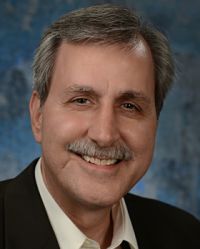 Faced with rising and volatile energy prices and thespecter of potential power outages, eBay decided last year that itwas time to step up its use of renewable power sources.
Faced with rising and volatile energy prices and thespecter of potential power outages, eBay decided last year that itwas time to step up its use of renewable power sources.
With its data centers comprising about half of the company'senergy consumption, eBay's sustainability team determined it madesense to focus on those facilities. First, it would consolidate thecompany's eight U.S. centers into three situated in Utah, Arizonaand Nevada. In addition, it would add onto the existing Utah centerto create a 30-megawatt facility powered entirely by renewableenergy, to be completed by mid-2013.
|“This means we'll be completely clean and green,” says DeanNelson, senior director of global data center strategy,architecture and operations at the San Jose, Calif.-based onlinecommerce platform, at right. “We're reinventing how we run our datacenters.”
|Like eBay, most corporations face a similar dilemma: how toreduce energy costs, address volatile prices and ensure reliablepower, all while cutting greenhouse gas emissions. To address thoseissues, a growing number of companies are getting serious aboutusing renewable energy sources, such as solar or wind, for at leastsome of their power needs.
|About 66% of companies plan to increase or significantlyincrease the amount of energy they get from self-generatedrenewables over the next five years, according to a recent surveyof 100 multinationals by Ernst & Young. “We're definitelyseeing a change in companies' commitment to use clean energy,” saysNatasha Scotnicki, director of the corporate program at Ceres, aBoston-based nonprofit that works with businesses on sustainabilityissues.
|At UPS, for example, the company's air and ground fleetcomprises the lion's share of its energy consumption. So recently,according to Lynnette McIntire, a company spokesperson and a memberof its sustainability team, Atlanta-based UPS expanded its “greenfleet”—trucks whose engines run on anything from electricity toliquefied natural gas—by 35%, to 2,500 vehicles, and stepped up itsefforts to experiment with different types of vehicles powered bydifferent types of fuel: large tractor-trailers for long-distancedriving vs. smaller vehicles for urban areas, for example. UPS isalso working with the Department of Energy on the Interstate CleanTransportation Corridor, known as the natural gas corridor, aneffort to create an infrastructure for vehicles powered by naturalgas. For now, the corridor goes from Long Beach, Calif., to SaltLake City.
|McIntire won't say how much UPS has investedin these efforts, but it has received plenty of federal and stateincentives to help. For example, working with a truck manufacturer,UPS received payments from the state of California, the entry pointfor the natural gas corridor, including $60,000 each for 30tractors and $40,000 for an unspecified number of electric packagecars.
|At eBay, Nelson and his colleagues figured that since theelectricity used to manage data made up a substantial portion ofthe company's total power usage, that's where they should start.What's more, with a warehouse of servers at the service of morethan 100 million customers at any given time, avoiding poweroutages was of critical importance. Such events mean a loss ofabout $2,000 per second for the company, according to Nelson.
|EBay's solution was ambitious: Starting with the Utah facility,the company would use renewable energy as a source of on-site powergeneration. “This is the first step in our onsite renewable energygeneration strategy,” says Nelson. The upgraded facility wouldhandle eBay's e-commerce marketplace, PayPal payment system andStubHub ticket sales—and, according to Nelson, eBay would be thefirst major technology company to use renewable energy, in the formof fuel cells, as the main source of power for its data centers.The fuel cells, which are powered by biofuels from such sources aslandfills, are supplied by a third party, and more of them can beadded as the demand for power increases.
|It's not clear how long it will take to see a return on theinvestment, Nelson says, but adds, “it will be cheaper overtime compared to utility costs.”
|In many cases, the C-Suite has become more involved in decisionsabout renewable energy. At 66% of the companies surveyed by Ernst& Young, for example, a C-suite executive or board chairman hasfinal decision-making authority in these matters. At UPS, thechief sustainability officer reports to the company's COO, who alsois the chair of the sustainability committee. That group is made upof seven members of the 11-person management committee, allhigh-level executives just below the C-suite level.
|At other companies, decisions are made at alower level. About a year ago, the corporate service team atSummit, N.J.-based Celgene, evaluated the drug developmentcompany's facilities in North America and decided to start with aneffort to have its headquarters completely powered by green energyby the end of this year, buying from a supplier of wind, solar andhydroelectric power. Still, if it came to a larger,corporate-wide plan, “the corporate services team would present aplan to our leadership, who would make a final decision and roll itout to the company,” says Vincent Barilla, executive director offacilities at Celgene.
| Introducing renewable energy comes with a variety ofchallenges, of course, but they may differ from company to company.For example, while compliance with regulations tends to be aheadache for everyone, according to Ernst & Young, somecompanies' strategies may mean they have to address their own,idiosyncratic issues. Take eBay. The company's plan called for alocal utility to serve as the backup energy provider for its Utahcenter. Trouble was, Utah law didn't let non-utility consumers buyand transmit power from producers of renewable energy. But Utahgenerates its power almost entirely from coal, an energy sourcethat didn't jibe with eBay's sustainability standards. “It's verydirty power,” says Nelson.
Introducing renewable energy comes with a variety ofchallenges, of course, but they may differ from company to company.For example, while compliance with regulations tends to be aheadache for everyone, according to Ernst & Young, somecompanies' strategies may mean they have to address their own,idiosyncratic issues. Take eBay. The company's plan called for alocal utility to serve as the backup energy provider for its Utahcenter. Trouble was, Utah law didn't let non-utility consumers buyand transmit power from producers of renewable energy. But Utahgenerates its power almost entirely from coal, an energy sourcethat didn't jibe with eBay's sustainability standards. “It's verydirty power,” says Nelson.
The answer: The company worked with various organizations,including Data Center Pulse, a group for data center professionals,Rocky Mountain Power, the state's largest utility, state governmentofficials and others to change the law. Legislation allowingnon-utilities to deal directly with producers of renewable energywas passed earlier this year.
|For Akron, Ohio-based Goodyear, which is moving to userenewables to power its manufacturing plants, one particularchallenge is the condition of each country—that is, how advancedthe infrastructure, policies and acceptance of alternative energysources are in different regions. The company has found that Europeis further along than other regions, so that's where it has focusedits recent efforts to install renewables. For example, last year,the company revamped all six of its plants in Germany to use solar,wind and geothermal energy.
|“Renewable energy makes sense everywhere for us,” says DennisMcGavis, director of global sustainability, pictured above. “It'sjust going to happen at different rates in different places.”
|For a look at how companies are preparing for possiblephysical risks related to global warming, see Bracing for Climate Change. See the results ofTreasury & Risk's 2012 Going Green Survey here.
|Complete your profile to continue reading and get FREE access to Treasury & Risk, part of your ALM digital membership.
Your access to unlimited Treasury & Risk content isn’t changing.
Once you are an ALM digital member, you’ll receive:
- Critical Treasury & Risk information including in-depth analysis of treasury and finance best practices, case studies with corporate innovators, informative newsletters, educational webcasts and videos, and resources from industry leaders.
- Exclusive discounts on ALM and Treasury & Risk events.
- Access to other award-winning ALM websites including PropertyCasualty360.com and Law.com.
*May exclude premium content
Already have an account? Sign In
© 2024 ALM Global, LLC, All Rights Reserved. Request academic re-use from www.copyright.com. All other uses, submit a request to [email protected]. For more information visit Asset & Logo Licensing.







